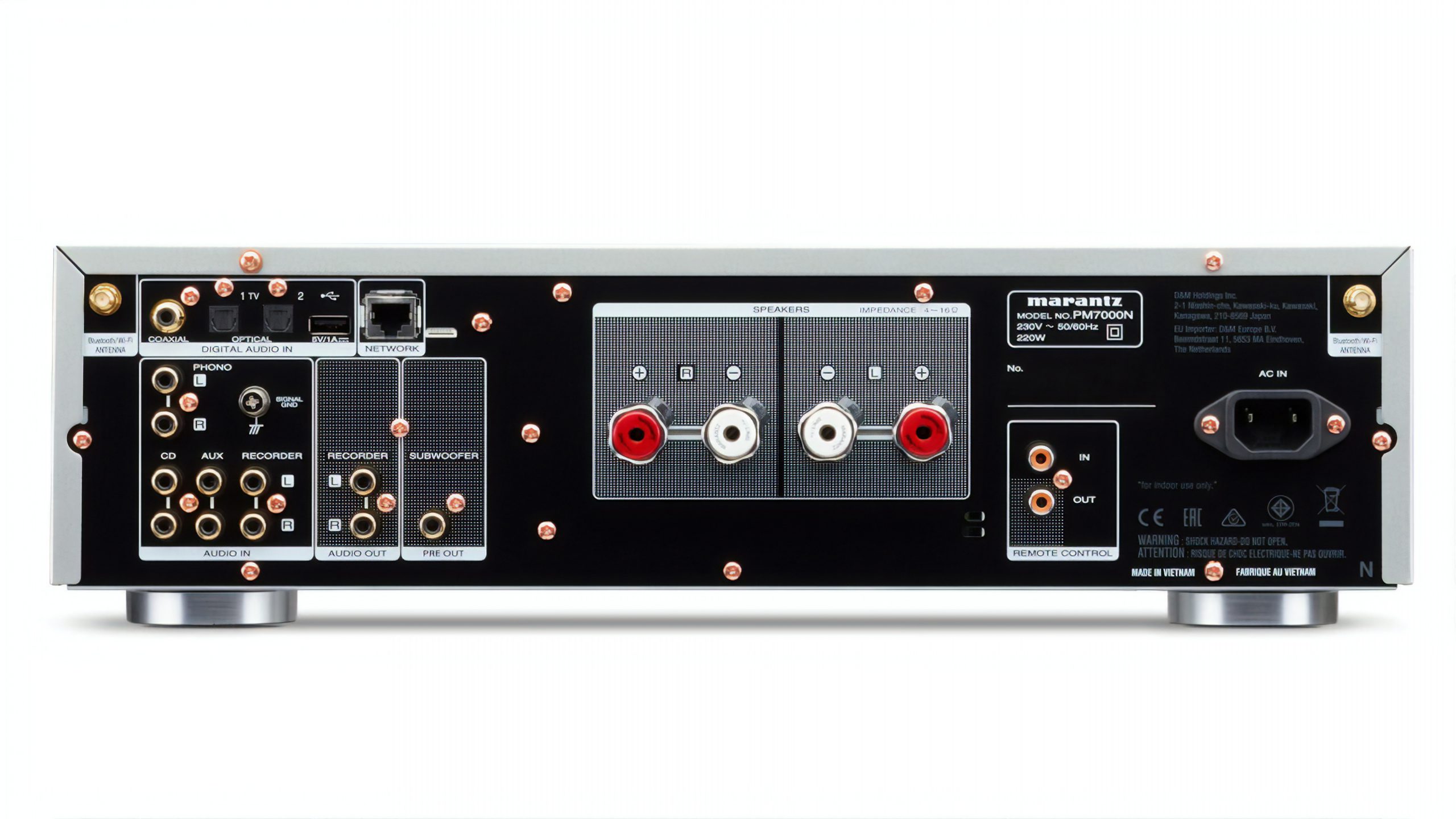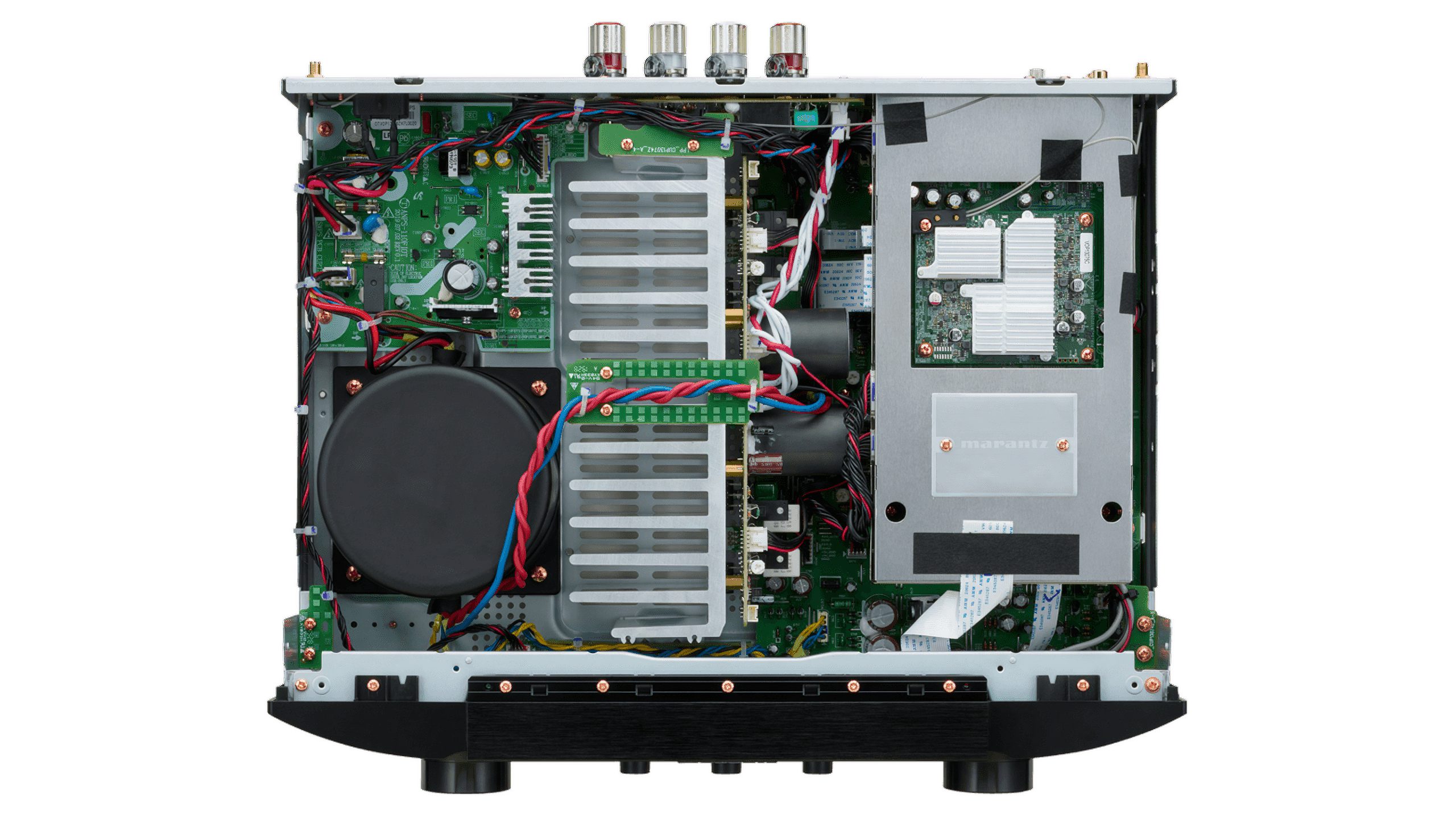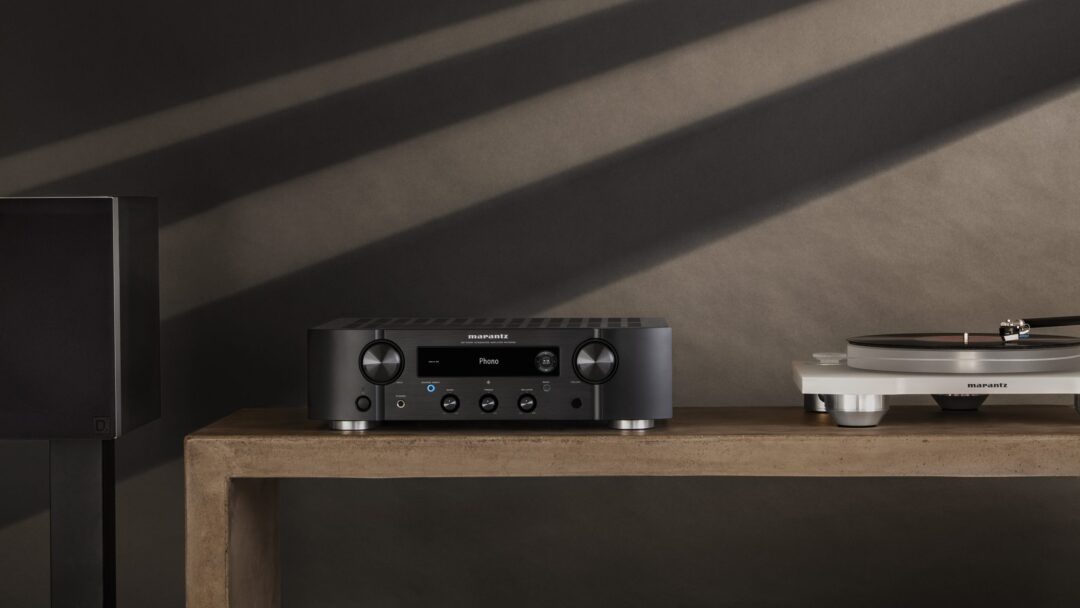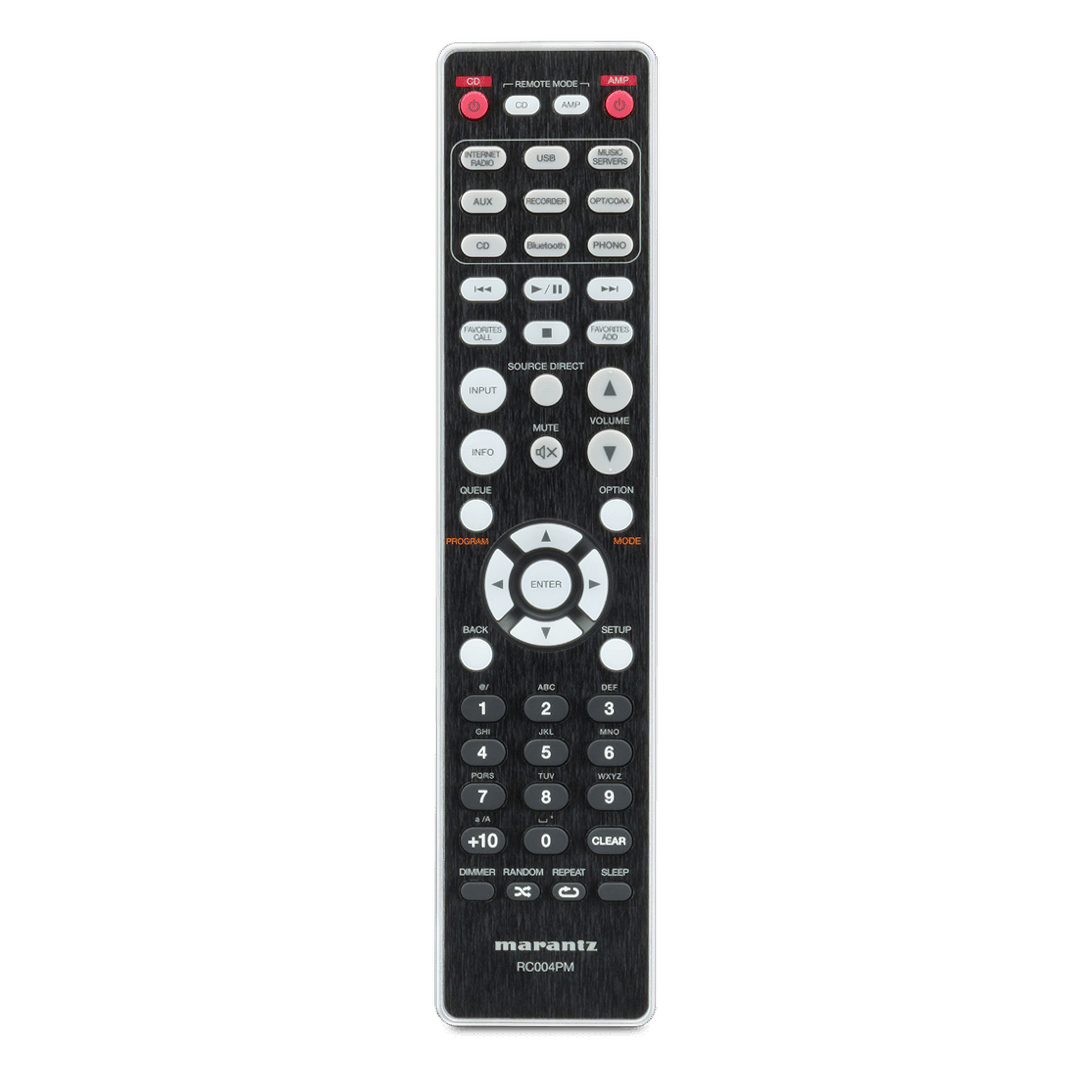Until now, Marantz has not been among the major investors in digital amplifiers with streaming. And this despite the fact that the twin company Denon launched the power system Heos several years ago.
It is only in the last couple of years that Marantz has implemented the Heos system in some of its amplifiers. With the full-size Marantz PM7000N, the Japanese manufacturer wants to stand out more in the segment, which has long surpassed traditional analog amplifiers in popularity.
This is the manufacturer’s top model among power amplifiers in two channels.
In all practice, this is the amplifier PM7005 with refreshed entrails, and it can hardly go wrong. If our test of the predecessor PM7004 is something to go by, we are talking about a good step up in sound quality from such as Sonos Amp, but also almost double the price. But then the Marantz amplifier also has a turntable input and a current headphone output.
The analog amplifier structure is also made with discrete components and HDAM transistor circuits whose job is to increase the dynamic surplus when it breaks loose at shorter intervals at a time.
Functionally, the power supply is similar to the one in the NA6006 network player, only with a different DAC. This means, among other things, that it has a built-in Heo streaming platform. This is controlled with an app on the mobile, and most music services are built-in. Heos can do about the same things as Sonos, with a similar user interface. The only service I miss support for is YouTube Music, so you have to use Airplay or Bluetooth for this.

High resolution but not MQA
Tidal subscribers who expect “better than CD quality” will be disappointed that the amplifier does not support MQA, and thus does not provide full sound quality on the Master releases. It is limited to CD quality.
High-definition files stored on the hard disk or network, on the other hand, are supported up to 24-bit / 192 kHz (or DSD 5.6 MHz). The AK4490 DAC chip theoretically supports up to 32-bit / 768 kHz (DSD 11.2 MHz), but Marantz has chosen to set the brake pad to 24-bit / 192 kHz. It does not have to be negative, as it is a challenge to thin the DAC chip to the maximum without at the same time adding unwanted noise.

User-friendly all-in-one
Connecting to wireless internet is playfully easy for iPhone owners. Just select in the menu that the amplifier should connect to the same network as the iPhone, and find the amplifier in the phone’s wi-fi list. The rest goes automatically. Other users can press the WPA button on the router, or log in with the remote control. The latter is more cumbersome, but it’s going well. Hopefully it will only be done once.
In everyday use, the Marantz amplifier is as user-friendly as any other stereo amplifier. Once you have selected a playlist or album in the clear app, you can use the included remote control to set the volume, enter the setup menu, etc. For convenience, Marantz surpasses other power amplifiers that lack a remote control. For example, Sonos mentioned Amp, but also Bluesound Powernode and Heos Amp.
With a remote control, you do not have to constantly have your mobile phone available to control the sound. Photo: Marantz
Clear sound
Quite unfairly, I first had the PM7000N connected to a pair of expensive Sonus faber Olympica III, to hear what really lives in it. With music directly from Tidal in the app, the sound from the speakers was definitely recognizable, where Björk’s fine voice on Blissing Me radiated into the room.
The air from the vocal cords comes out clearly, so does the chest sound, and you feel the room is large enough for you to believe it. However, there is something that prevents the magic from fully emerging.
I can not quite put my finger on what is missing, so I switch to Hegel H120 (test coming), to have something to compare with. Suddenly it is as if everything calms down. More details emerge, but without being forced. People often talk about a “blacker background”, and that is also true here. In relation to Hegelen, it is as if the Marantz amplifier has more “scattered light” in the soundscape, like a starry sky that at first glance looks completely dark and clear, there are just not that many stars there. Connect a better amplifier and more stars will appear. Because there is less light pollution against the night sky.
This is despite the fact that both the Hegel H120 and Marantz PM7000N use the exact same DAC chip. The difference is that the H120 costs ten thousand kroner more, so I do not think this is against Marantz, it is more to hear where it stands in relation to a better reference.
Speaker replacement
When it comes to replacing the speakers, I stay in the unrealistic price scale for now, but the Audiovector R3 Arreté is much easier to operate for a mid-range amplifier than the Sonus fabs are. It also has a more airy treble reproduction, which brings out more details at the top.
This works far better. Mac Miller’s RnB ballad Good News wore the brake pad with Olympica III, but now it’s faster and more dynamic in the bass, and the voice of the late Mac Miller sounds more effortless and open. You can play loud, it lives, and now I sit to a greater extent and feel the depression in the performance. Yes, the more expensive Hegelen is still better, but the Marantz has now come out of its shell, and I nod in agreement that, yes, it is a lot of good you can buy for the ten thousand kroner you save by going for the PM7000N.
Over to classical music, with cellist Sheku Kanneh-Mason and the album Elgar. Recorded with the London Symphony, conducted by Sir Simon Rattle. Third track, Cello Concerto in E Minor, OP. 85 – 1. Adagio – Moderato is a melancholy affair. The cello is full of timbres, with lots of lovely body down, and at the same time with great overtones. Marantz gets a lot of the magic through, this is sound I believe in.

Compact speakers
But what about speakers in the amplifier’s own class? Yes. Dynaudio Evoke 20, perhaps the best compact speakers I know of for less than 2000, brings out its qualities with the Marantz amplifier. The soundscape disappears backwards towards the horizon that the speakers are known for, and there is plenty of space between the instruments.
The Dynaudio speakers would get even more out of the bass register with a more powerful amplifier, the double bass on Laura Marlings Soothing could well have had an even better foundation and better stop-and-start control. But the amplifier shows that it is not afraid of anything, it gets the music to the listener no matter what it should be.
Headphones
If you have a pair of expensive headphones, you will be happy that the PM7000N has a headphone output that will not struggle to operate them. My own HiFiMAN / Massdrop HE4XX sounds as they should, and the Marantz can play loud on them. More heavy-duty watches such as the Sennheiser HD 800 S, on the other hand, are a little too slim.

Competitors
Ok, then there is even more calm and control in the soundscape with the Hegel H120, and Marantz also does not have the beat strength of the Naim Uniti Atom, my favorite among compact power amplifiers. Which is also more than twice as expensive as the PM7000N, and thus another unfair comparison.
The Hegel H90 is fairer to compare with, although it does not have the same power options as the Marantz. But it has AirPlay and DLNA via network, and also USB-DAC input that Marantz lacks. In any case, the H90 also has a little more control than the Marantz amplifier, and I also think it has a slightly better focus on the stereo perspective.
It may seem strange, but also the small Bluesound Powernode 2i has better rhythm in the bass register than the Marantz PM7000N. But I like the harmonic reproduction in Marantz better, and all in all it has the better quality of the reproduction in my ears. By the way, Sonos Amp can only forget to compete in the same quality league.
Conclusion
The Marantz PM7000N is an all-in-one amplifier that deserves to be taken seriously. Built on the PM7005 amplifier, it sounds very good, with good resolution and a nice appearance. It also has decent bass control, although this is not its strongest point.
Compared to more expensive amplifiers, there is a lack of tightness and control, and we could have wished for an even “blacker background”, which made the music stand out more. But that is exactly it; they are more expensive. The Marantz amplifier definitely defends the price tag, especially when you look at what it can boast of equipment. Here are both streaming, multi-room, turntable input and headphone output. Only speakers are missing here.

We think
The sound is clear and nice, with enough power to go up when you want. Most streaming services and audio files are supported, in a user-friendly format. Do not have the last word when it comes to resolution and transparency. Does not support MQA.
1299 €
Specifications
- Power: 2 x 60 W 8 ohms
- Network: Wi-Fi, Ethernet
- Streaming: Heos, Spotify Connect, Tidal, Deezer, Amazon Music, SoundCloud, iHeart Radio, Airplay 2
- Inputs: 3 line RCA, 1 phono, 1 optical dig, 1 coax dig, 1 USB-A
- Outputs: Subwoofer, line RCA (fixed level), headphone
- DAC: 32-bit / 768 kHz
- Maximum music resolution: 24-bit / 192 kHz
- W x H x D: 44 x 12.5 x 37.9 cm
- Weight: 10.8 kg


